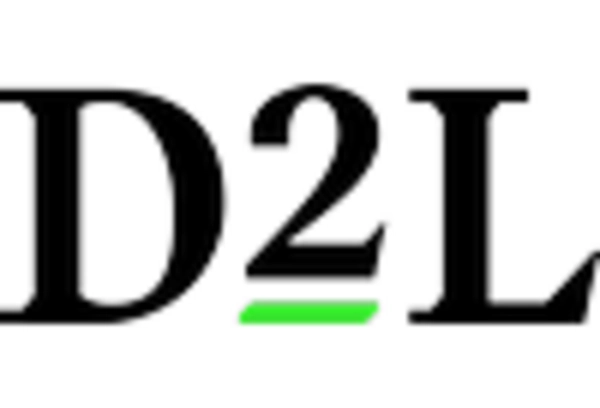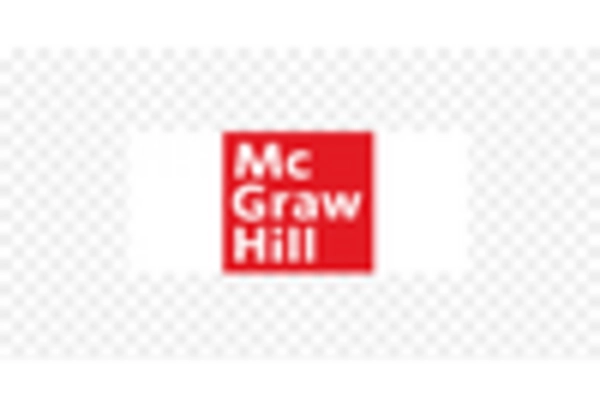Focus on Data-Driven Decision Making
The emphasis on data-driven decision making is becoming increasingly prominent within the Higher Education Technology Market. Institutions are harnessing data analytics to inform strategic planning, enhance student services, and improve academic performance. By analyzing data on student engagement, course completion rates, and learning outcomes, educational leaders can make informed decisions that drive institutional effectiveness. The market for educational data analytics is projected to grow significantly, with estimates suggesting a growth rate of around 12% annually. This focus on data not only aids in identifying areas for improvement but also supports the development of targeted interventions that enhance student success. Consequently, the Higher Education Technology Market is likely to see a rise in investments in data analytics tools and platforms that empower institutions to leverage insights for better educational outcomes.
Emphasis on Cybersecurity in Education
The emphasis on cybersecurity within the Higher Education Technology Market is becoming more pronounced as institutions increasingly rely on digital platforms for teaching and administration. With the rise in cyber threats, educational institutions are prioritizing the protection of sensitive data and ensuring the integrity of their systems. Recent reports indicate that educational institutions are among the top targets for cyberattacks, prompting a significant investment in cybersecurity measures. This includes the implementation of advanced security protocols, training for staff and students, and the adoption of secure technologies. As the landscape of higher education continues to evolve, the focus on cybersecurity is likely to shape the strategies of institutions, making it a critical driver in the Higher Education Technology Market.
Integration of Artificial Intelligence
The integration of artificial intelligence (AI) into educational technologies is transforming the Higher Education Technology Market. AI applications, such as chatbots, personalized learning algorithms, and predictive analytics, are being utilized to enhance the educational experience. Institutions are leveraging AI to provide tailored learning paths, automate administrative tasks, and improve student support services. Recent studies indicate that AI-driven solutions can increase student retention rates by up to 20%, highlighting their potential impact on educational outcomes. As educational institutions seek to optimize their operations and deliver personalized experiences, the demand for AI technologies is expected to rise. This trend suggests that the Higher Education Technology Market will continue to evolve, with AI playing a pivotal role in shaping the future of education.
Increased Demand for Digital Learning Tools
The Higher Education Technology Market is currently experiencing a surge in demand for digital learning tools. This trend is driven by the need for institutions to enhance student engagement and improve learning outcomes. According to recent data, the market for digital learning tools is projected to grow at a compound annual growth rate of approximately 15% over the next five years. Educational institutions are increasingly adopting technologies such as learning management systems, virtual classrooms, and interactive content to facilitate remote learning and collaboration. This shift not only caters to the preferences of tech-savvy students but also aligns with the evolving educational landscape that emphasizes flexibility and accessibility. As a result, the Higher Education Technology Market is likely to witness significant investments in innovative digital solutions that support diverse learning environments.
Rise of Collaborative Learning Technologies
The rise of collaborative learning technologies is reshaping the dynamics of the Higher Education Technology Market. These technologies facilitate interaction and cooperation among students, fostering a sense of community and enhancing the learning experience. Tools such as collaborative platforms, discussion forums, and project management software are increasingly being integrated into curricula to promote teamwork and peer learning. Research indicates that collaborative learning can lead to improved critical thinking skills and higher retention rates among students. As educational institutions recognize the value of collaborative approaches, the demand for such technologies is expected to grow. This trend suggests that the Higher Education Technology Market will continue to evolve, with a focus on creating environments that support collaborative learning and engagement.


















Leave a Comment